How to Take International Family Trips on the Cheap
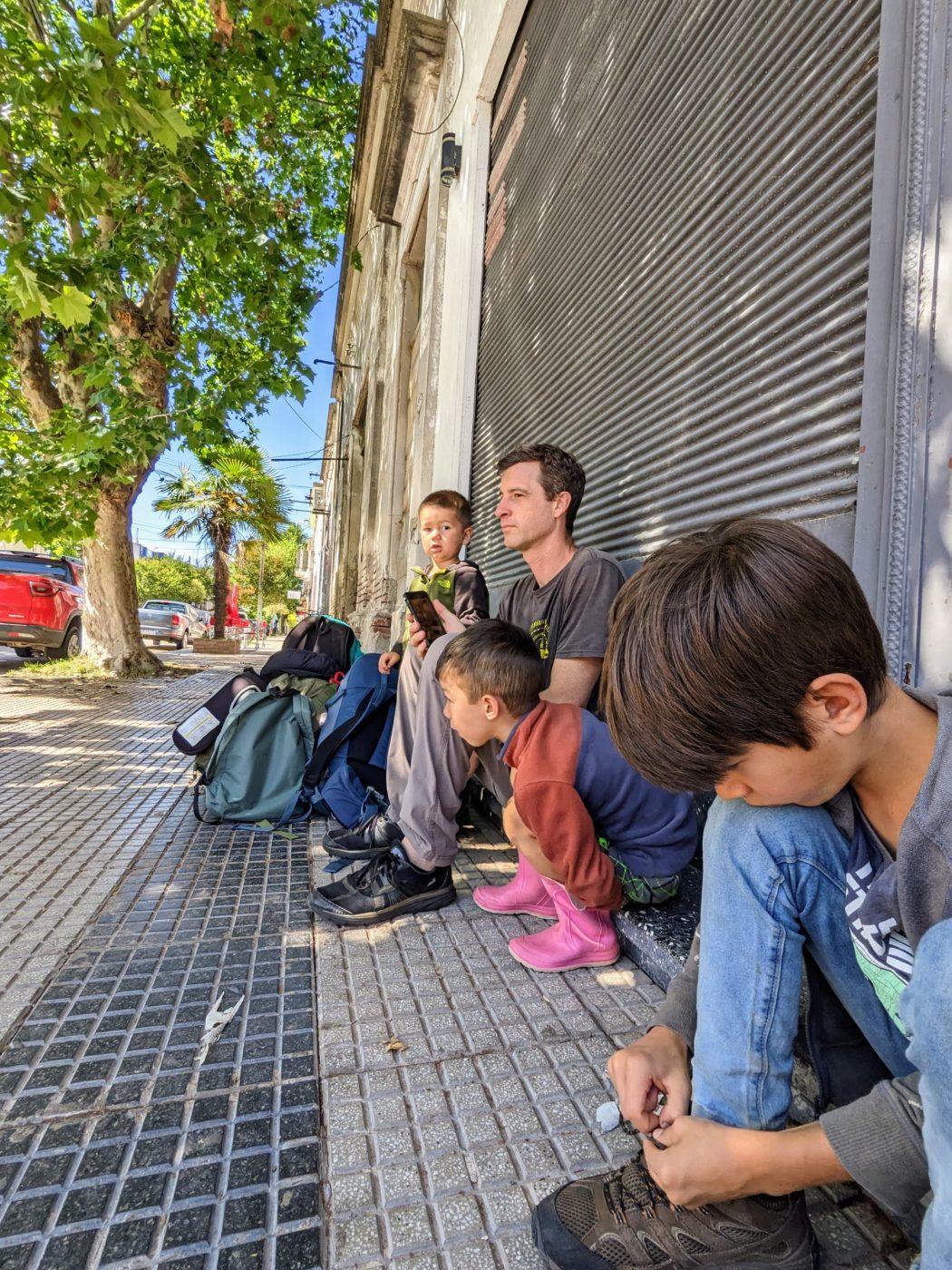
Have you ever wondered how some families take frequent international vacations, or even spend an entire year abroad? I feel the vibe of this unspoken question whenever we talk with friends and family about our trips: where do you get the money?
The fact is, it doesn’t take that much money to travel the world. What if I told you our month-long Indonesia and China trip (back when we were a family of four) cost less than $4,000? Or about that time our monthly credit card bill was slightly lower when we traveled to Colombia for two weeks in 2019? In fact, we’ve never taken a trip that was hard on the wallet. No saving up tens of thousands of dollars for that vacation of a lifetime.
If you’re a single or a couple, those numbers might sound like a lot (or maybe not). But for a family of five, we’re not talking a whole lot more than baseline monthly cost of living in a major metropolitan area. Solo travelers and couples can get by much cheaper (I once lived in Mexico for 3 months on less than $1,000 total).
While I secretly enjoy being mysterious and having people guess about our source of cash — why do they travel to Colombia so much, anyway? — this article will dispel any mystery surrounding affordability. Hopefully, I will be able to show you that money does not have to be an impediment to seeing the world.
This article explains how we do it. There are plenty of other tips out there that either don’t fit our style or are too low impact to be worth the effort. Those of different means and tolerance for inconvenience might find they’d rather spend more for certain things, or less. So calibrate these tips to your own personality and budget.
Table of Contents
- 1. Plan Your Trip Around the Cheapest Flight
- 2. Pack Light
- 3. Travel to Countries with a Low Cost of Living
- 4. Consider Renting a Car
- 5. Pay for Tours Only When You Have To
- 6. Stay at Airbnbs and Homestays
- 7. Stick Around for Longer
- 8. Rely on Your Network
- 9. Work or Volunteer
- 10. Rent Your House While You’re Away
- 11. Resist FOMO and Peer Pressure
- 12. Travel in the Off Season
- 13. Credit Card Points
- Bonus: A Real World Example
1. Plan Your Trip Around the Cheapest Flight
The flight is the cornerstone of your vacation budget. This is especially true the larger the family. A rental car or hotel is a set price whether you’re a party of two or five. But flight tickets multiply cost. In other words, a modest $50 savings on a plane ticket is a respectable $250 saved for a family of five.
Finding cheap plane tickets is a whole topic of its own, so I wrote about it here. Nevertheless, the one piece of advice I’ll share in this post is that the more flexible you are — regarding your dates and/or destination — the better your chances of scoring a bargain. And if you’ve achieved this, you’ve already won half the battle.
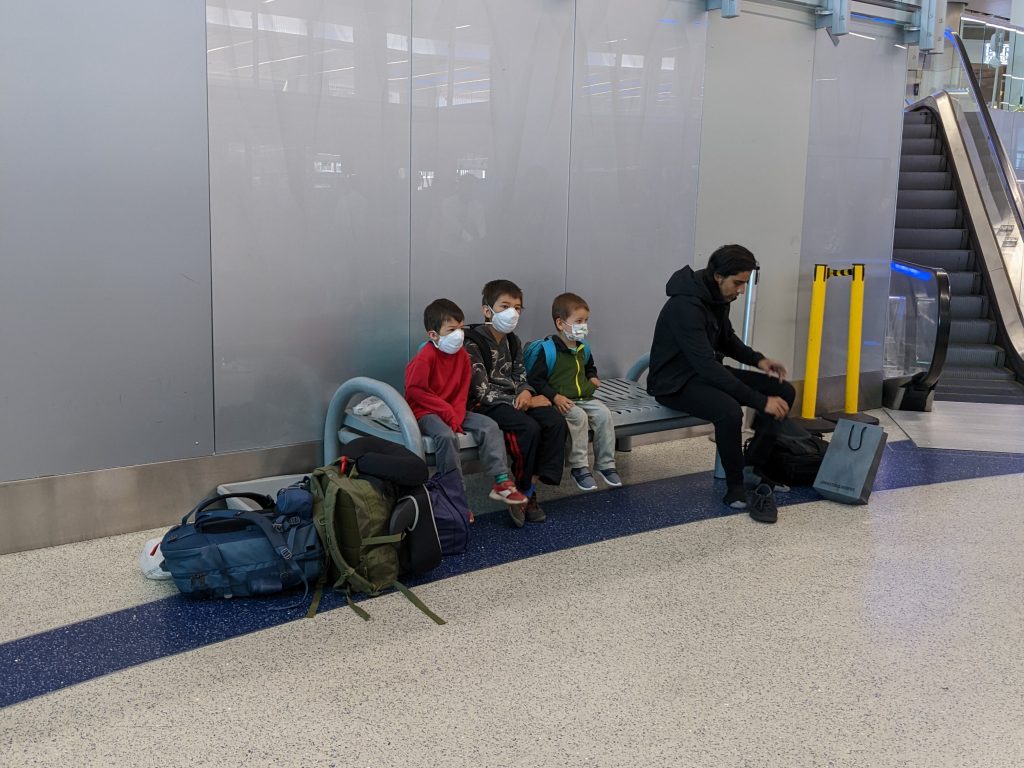
2. Pack Light
Finding a super-cheap plane ticket on a budget airline will do you no good if you pack like royalty. Oftentimes the price of checking a piece of luggage, or even bringing a carry-on beyond the dimensions of a personal item, can cost more than the price of the flight itself. Not exaggerating.
Other ways in which a heavy load will cost you:
- Having to take a taxi when you could have walked or taken the bus.
- Not being able to fit all your stuff into the trunk of a compact rental car.
- Your back.
For more on this topic, check out our post on packing tips.
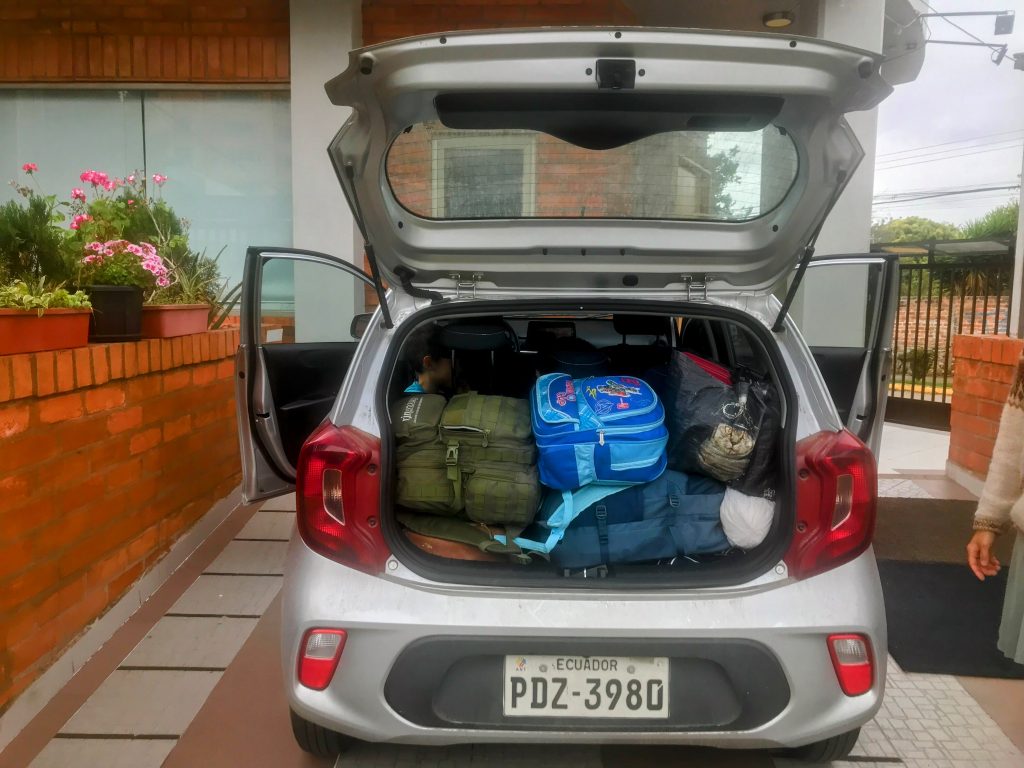
3. Travel to Countries with a Low Cost of Living
You can save a lot of money just by traveling to a place that costs less. If you are from the United States, that includes just about everywhere. In fact, the most expensive trips we’ve ever taken as a family were domestic. That is probably why people who only travel domestically can’t fathom how we can afford to travel as we do — they think it must cost even more.
That couldn’t be farther from the truth. In Bolivia and Brazil our family of five could eat out for less than $10 if we ate the typical fare. In Colombia, we splurged on a modern Airbnb with three bedrooms, a big kitchen, and a private swimming pool for the same as it would cost to rent the cheapest two bedroom apartment in the Chicago suburbs. South America not your cup of tea? We spent no more than $30 – $50 per night on boutique hotels, before Liuan and I had children, in Italy and Spain. And of course, most of Asia is well known to be very economical for tourists.
4. Consider Renting a Car
This isn’t always the most budget-friendly move, but it can be. Don’t rule it out. This is especially true for a family or group, where individual plane and bus tickets can add up to more than renting a compact car.
Sure there are risks, but there are some big benefits. You can stop for potty breaks whenever you like. Or you can stop at a fruit stand (Liuan cheers!).
Also, you need to think about the overall trip cost, beyond comparing bus/plane tickets versus rental fees. For example, you may be able to find more affordable lodging by widening your range with a car that you couldn’t get to easily with public transit. You can also travel more independently. Instead of paying hundreds of dollars per head for a tour, you can do it yourself at your own pace.
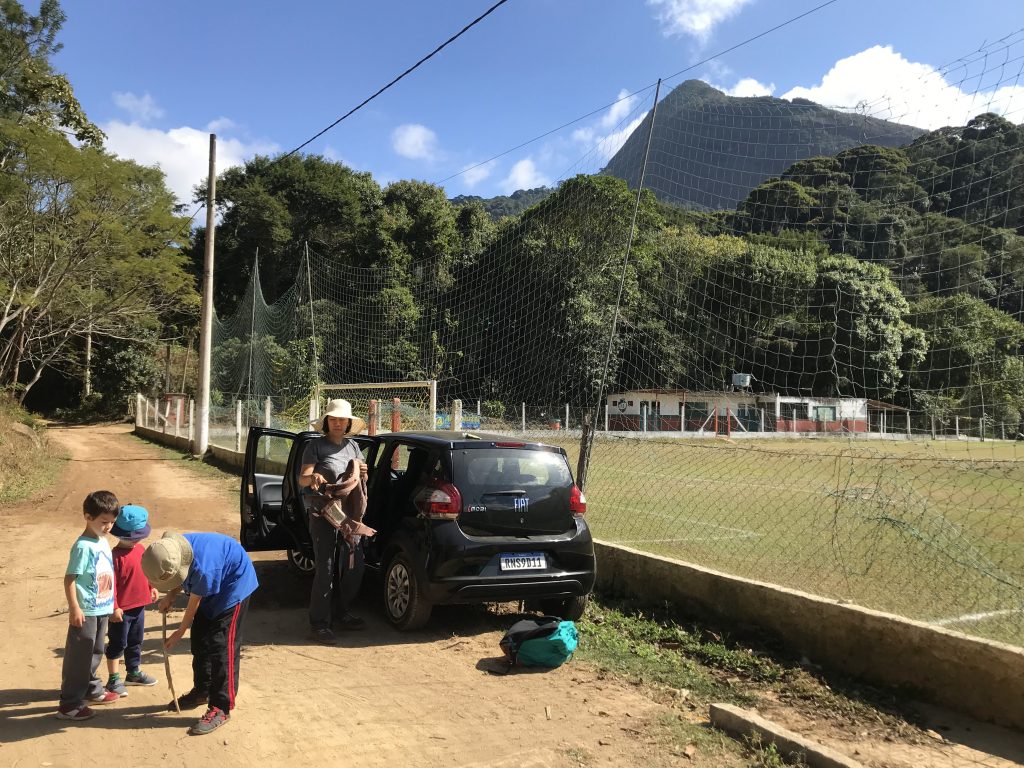
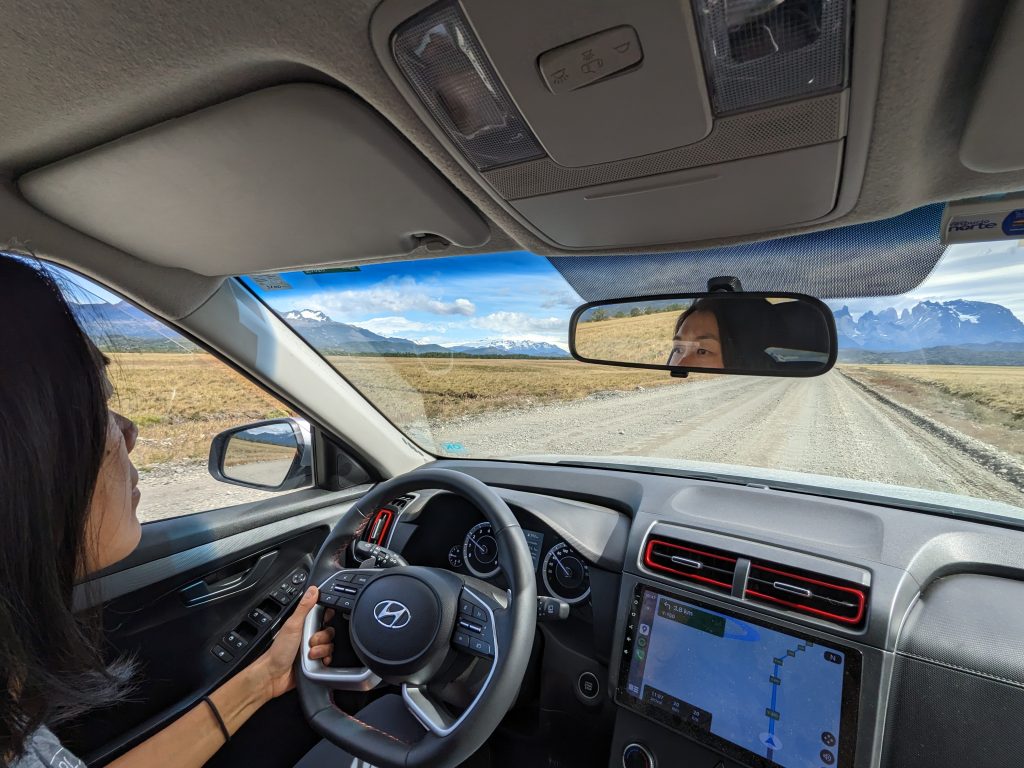
In Puerto Natales, Chile, they only had automatics, so Liuan got a turn at the wheel!
5. Pay for Tours Only When You Have To
Speaking of tours, those can get pricy. Our rule of thumb is, if you can get there by road or trail, you can do it yourself. If you need a boat or helicopter, you probably need to purchase a tour.
We’ve saved a lot of money by reading other travel blogs, asking locals where to go, and doing it on our own.
6. Stay at Airbnbs and Homestays
For one, Airbnbs provide more space and amenities for the same price as a hotel room. But again, looking at the overall price of the trip, you can also save money simply by having a kitchen at your disposal. Sure, eating out is part of the fun, but having a bowl of cereal for breakfast or packing a sandwich for lunch is often more convenient and cost effective. You can still eat out whenever you wish.
For an article that details what we spent while traveling South America, click here.
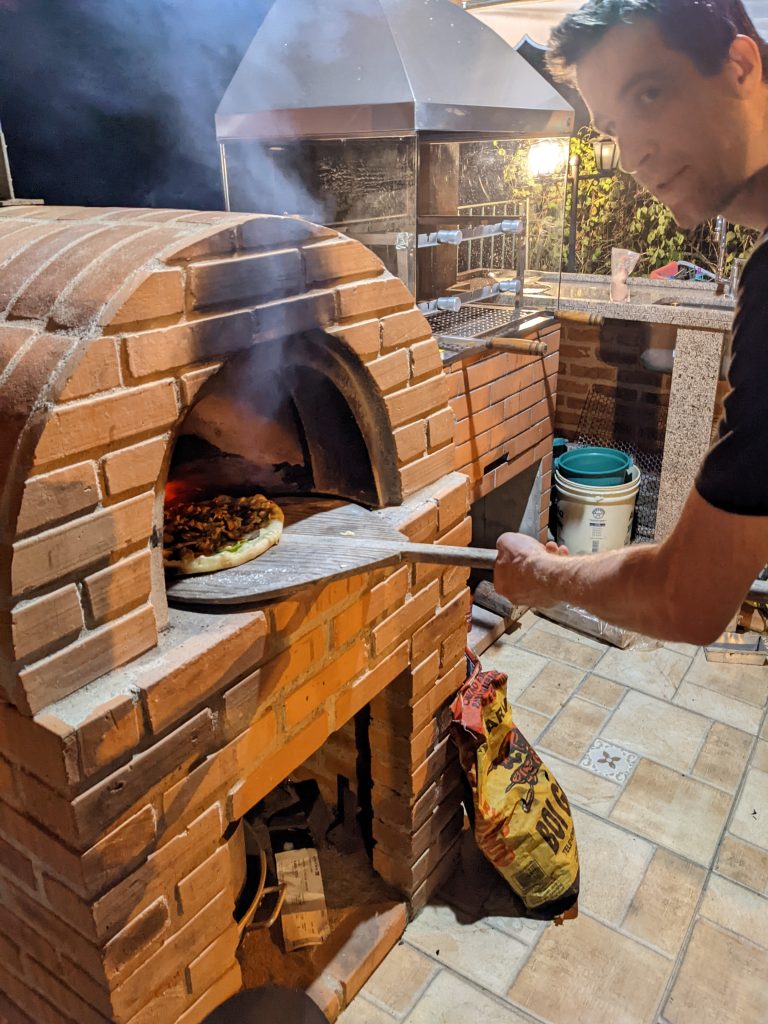
7. Stick Around for Longer
How can longer equal cheaper?, you may ask. Well, for one thing, vacation rentals frequently offer steep discounts for longer stays. It’s not unusual for a 30-day rental to cost less than a 22-day rental overall.
But this advice can be taken in another sense. Oftentimes there is the temptation to ping-pong around to as many places as possible in a short timeframe. Instead, consider taking a slow travel approach, even if you only have a week or two. Find a place that really interests and pleases you and enjoy it for all its worth. Not only is it cheaper to travel that way (because of lodging discounts and less transit related expenses), but it also affords you more opportunities to develop friendships and experience all the surprising things that lie beneath the surface that a more transient tourist will miss. And, Liuan wants to add, it reduces your total carbon emissions.
8. Rely on Your Network
You might not think you know that many people that live abroad, but if you poke around your social network a bit you might be surprised. All you need is a friend-of-a-neighbor sort of connection. You can also develop first-hand international connections by hosting foreign visitors in your home or volunteering to teach ESL (English as a Second Language).
I’m not suggesting that you should invite yourself to someone’s house, or demand anything at all. Simply let people know that you will be in their neighborhood and see what comes of it. Maybe you’ll get some good tips about things to do (or avoid) in the area. Potentially they’ll hook you up with other friends or family. Sometimes they’ll even offer a free stay at their home.
Always make sure to show your appreciation for people’s kindness and hospitality. Be a good guest. Bring gifts. Be helpful. Make your hosts glad you came.
9. Work or Volunteer
Opportunities abound to volunteer or work abroad with sites like WorkAway. (If you are very budget conscious and don’t want to pay the fee to be a member of the site, there is a way around that. Browsing for opportunities is free on the website. But then when you’re ready to reach out, do some sleuthing on the internet and find an alternative way to contact them. It’s usually not that difficult.)
On our year of travel around South America, we volunteered for two months at Eco Caminhos in Brazil, two weeks at Quinta Esencia in Argentina, two weeks at Kaiwai Permaculture Farm in Bolivia, and two weeks at Rio Lindo Coffee Farm in Ecuador. They were all very different experiences. Some came with a cost (justified, since we required more food and housing than a solo traveler), and others were free.
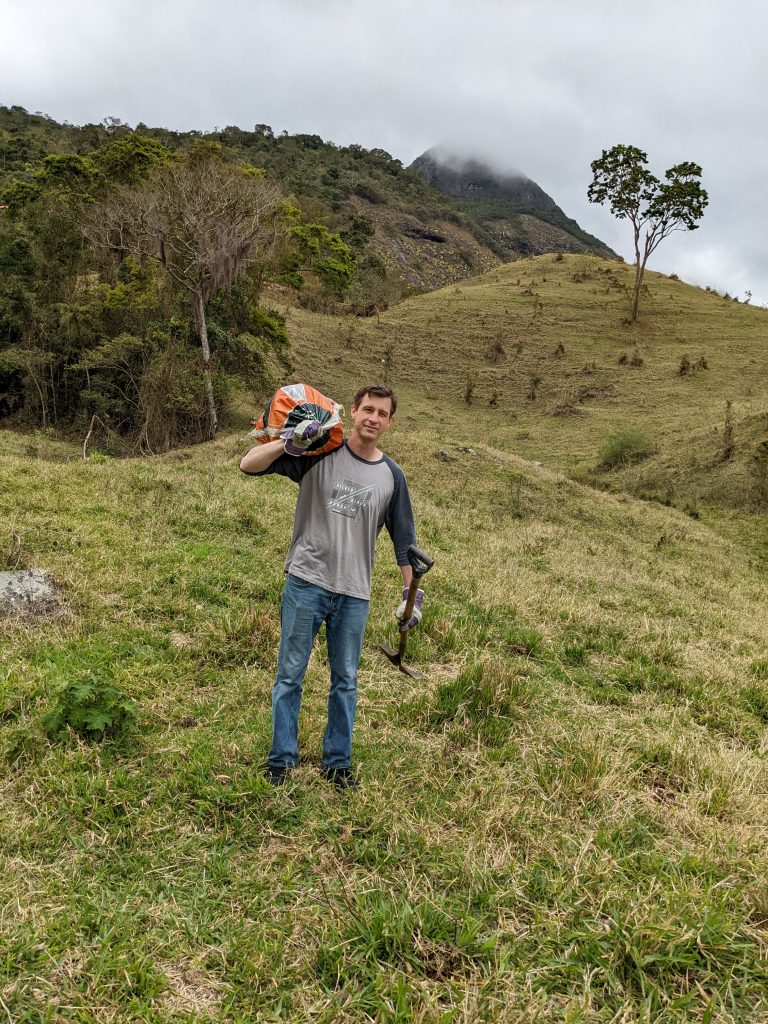


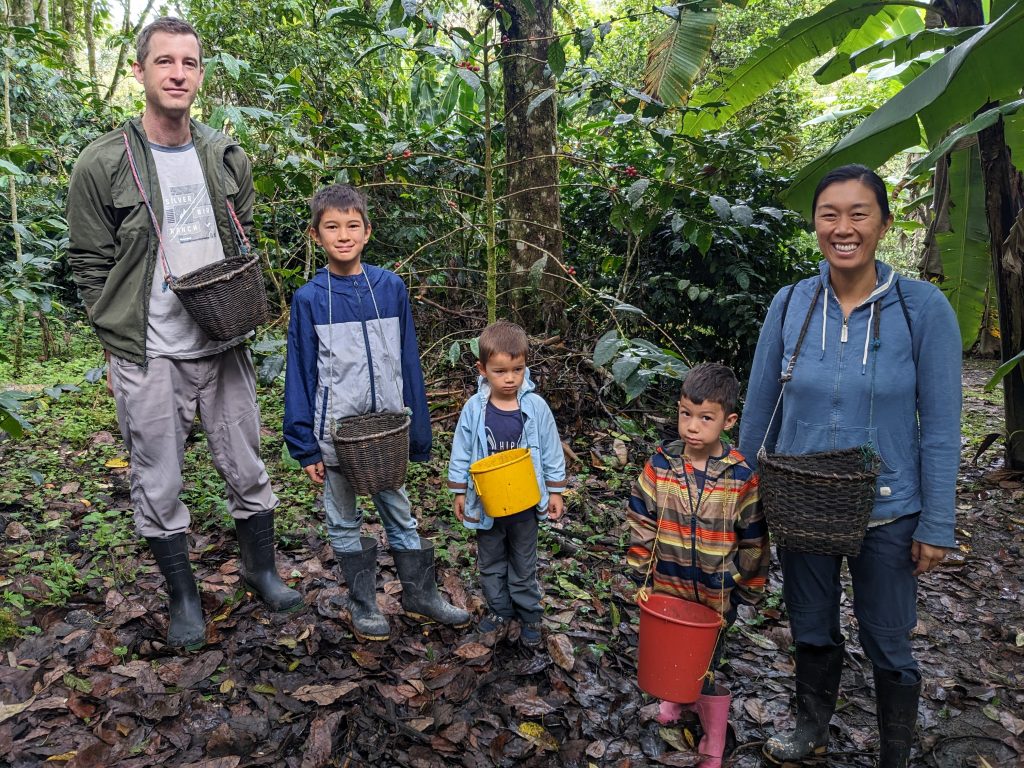
10. Rent Your House While You’re Away
Your home will be bored and lonely without you there, so why not give it something to do? When we leave, we list our home on Airbnb and/or VRBO. The income offsets some of our travel costs, and on rare occasions we even make more money traveling than staying home.
Most of the effort will be up front to create the listing and prepare your home (e.g. deal with broken stuff and safety issues) for visitors. You will also need to do a final cleaning before you go.
When you rent out your house, you also need to designate someone to do the changeovers between guests. For short absences, this might not be needed. But for anything longer than a week, you may need to recruit a friend or family member to help for a share of the profits. During our year-long adventure in South America, we made a formal arrangement with a trusted friend. The proceeds more than paid for her work and the house-related expenses.
11. Resist FOMO and Peer Pressure
Don’t feel that just because you are in Ecuador, you must visit the Galapagos Islands. If something is outside your budget, pass it up. There are plenty of amazing views and life-changing experiences to be had without shelling out wads of cash.
Just accept that anywhere you go there will be an even grander experience for those willing to pay more. We thought we were having the ultimate experience when we flew all the way to Ushuaia at the southern tip of South America. That is, until we met tourists for whom Ushuaia was just a departure point for Antarctica. We decided against taking a boat tour to see glaciers up close, even though that was of interest to Liuan. We even passed up an opportunity to see the Uyuni Salt Flats in Bolivia (it’s a long story).
I’m not saying you shouldn’t spend money if it’s important to you. The point is not to fall into the trap of thinking, I made it this far and everyone will say I missed out if I don’t see X. The more it costs, the more you need to weigh its worth to you.
12. Travel in the Off Season
We don’t actually spend much time researching seasonal tourism trends in other countries. In fact, it’s the other way around: we follow the deals and oftentimes they end up being in places that are in their tourism lull.
Though we don’t always intentionally consider this, I couldn’t fail to mention it because you can get some eye-popping, way-to-good-to-be-true deals. In Brazil, our monthly car rental was barely over $300 in July and August, their winter months. And then there was the time we and another family stayed in a palatial house in Spain, an hour east of Barcelona, for $88 per night (I just checked the listing and now it’s going for $326 per night).
13. Credit Card Points
By temperament, I’m not a credit card points guy. Filling out forms, talking to salespeople on the phone and having things to track and remember are some of my least favorite things. Occasionally, my wife chases some of those deals. And they undeniably pay off. Our family took an Amtrak from Chicago to Los Angeles for free. We’ve gotten a few flights and hotel stays covered as well.
As I already established, I’m no expert on this. But some friends of ours, also slow travelers, make a living off their expertise on credit card points. So I’d encourage you to start there if this sounds like something that interests you.
Bonus: A Real World Example
It’s one thing to list a bunch of tips, but how does this look in real life?
I’m tempted to share how we traveled Indonesia and China for a month on less than $4,000, partly because it’s so extreme and partly because it neatly exemplifies several tips. Due to an unusual imbalance in relative currency values, flights on Chinese airlines were ridiculously cheap if paying in dollars ($400 per person for our three leg, multi-city flights: Chicago to Bali, Lombok to Changsha, and Changsha to Chicago). Indonesia is a very low cost of living country. Ditto for China. In China we stayed with Liuan’s relatives, further reducing our expenses. We took just two backpacks. Great example of tips 1, 2, 3, 7 and 8.
However, that was 2017 — so a bit dated. And probably not easily repeatable.
So here is very recent and repeatable example. Imagine yourself spending four weeks in Colombia’s coffee country. It’s a very safe and beautiful part of the country. To take a taxi is to ride in the back of a vintage jeep. And, best of all, they produce wickedly delicious coffee.
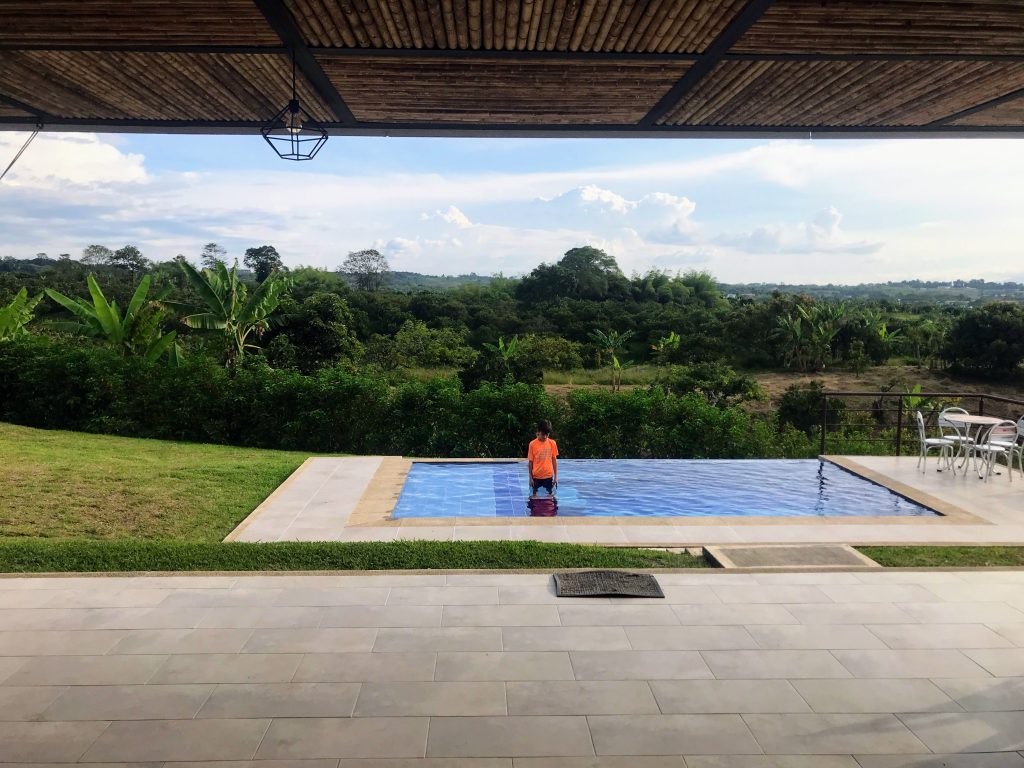
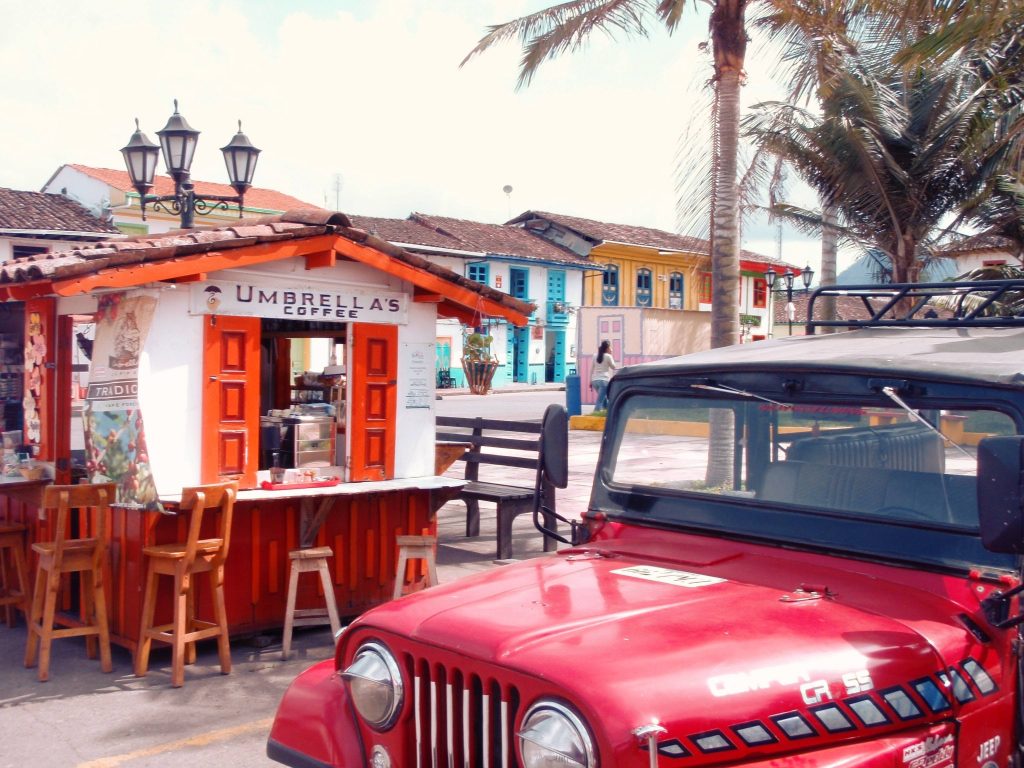
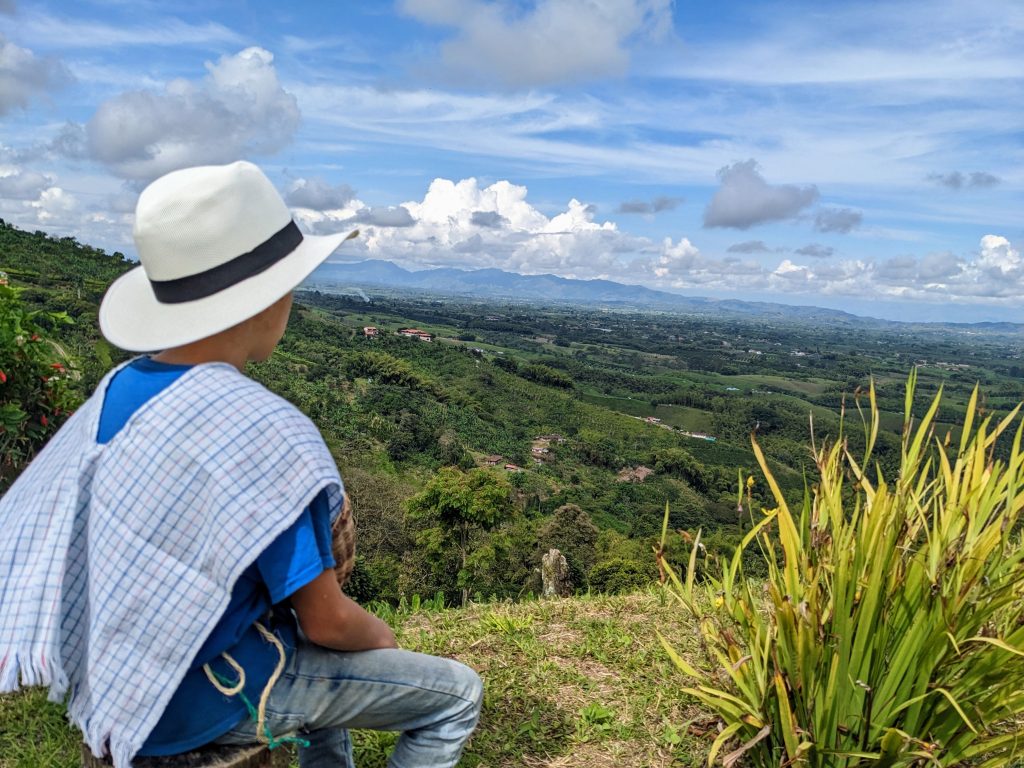
Here is a breakdown of the major costs…
| Item | Cost | % | Comments |
|---|---|---|---|
| Round trip flight Chicago to Medellin for 5 people. | $1,160 | 30% | I can’t provide my own costs because we were already in South America when we went most recently. I got this from a quick search on SkyScanner for 2 adults and 3 kids in the next couple of months. You could also fly directly to Pereira or Armenia, but it costs more, at least at the moment I searched. |
| Roundtrip bus Medellin to Pereira for 5 people. | $152 | 4% | This is from a search I did on busbud.com. This gets you more into the heart of coffee country. |
| Spacious 3-bedroom Airbnb with Kitchen, Swimming Pool and Views | $1,166 | 30% | There were cheaper options, but this one had it all! |
| Car Rental / Gas | $460 | 12% | Gas was $48 (and we did a lot of driving!) and car rental from Localiza was $410. |
| Meals for 5 people. | $820 | 21% | Includes groceries and dining out. We cooked 80-90% of the time. We shopped half the time at the typical grocery stores and the other half at the high-end grocery stores. |
| Coffee Tour (Not Optional) for 5 | $85 | 2% | You gotta do at least one. This was the price of one of our favorite tours, Divisa de Don Juan in Pereira. |
| Income from Airbnb | $-2,195 | Total earnings minus what we paid for cleaning, property management and utilities. | |
| TOTAL EXPENSE | $3,843 | Pretty good for four weeks. | |
| TOTAL EXPENSE (minus Airbnb Income) | $1,648 | Incredible for four weeks. |
* All costs are for 4 weeks, family of five, only the “basics” (though you could get even more basic if you wanted).
Note that this doesn’t represent our actual total cost when we visited Pereira back in April. We were already in South America, so transportation was less. But we also spent money on other non-essential things, like three additional coffee tours on top of the one “required” one (so we could review them on the blog), and an overnight stay at a hot springs resort.
If you decided to stay for only two weeks instead of four, your total cost would be less, though not proportionally less. Your per diem cost will always be lower the longer you stay. Less people would directly reduce expenses. If Liuan and I were just traveling as a couple, the total would be less than half. Also, you might have gathered that our version of “budget-friendly” is not finding the smallest, dingiest place to lay our heads. We compromise between cheap and having a great time, because the experience is the whole point.
Colombia is reliably budget-friendly due to its proximity to the U.S. That is why we’ve visited three times and why I decided to use it as my sample. Other destinations can be just as budget-friendly, but sometimes less frequently due to being farther away or having parts of the year that are more crowded with tourists. That means you’ll have to take opportunities as they come, which is basically the point I’ve been trying to make.
I believe most countries in the world could be traveled inexpensively if you follow these tips and choose your timing wisely. So, what are you waiting for? Go forth and explore!






